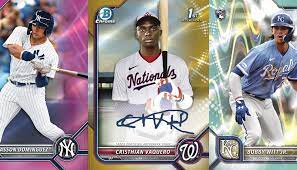The Evolution of Indigenous North American Stickball: Discovering the Fascinating Origins and Impact of this Traditional Sport
The Evolution of Indigenous North American Stickball: Discovering the Fascinating Origins and Impact of this Traditional Sport

Origins and history of stickball
The origins of stickball can be traced back to ancient times when Native American tribes first developed the game as a ceremonial ritual. The game was played for various purposes, including settling disputes between tribes, training warriors, and honoring the spirits. Stickball was seen as a way to connect with the spiritual world and maintain balance within the community.
In its early form, stickball was played with a wooden stick and a ball made from deerskin or a wooden sphere. The objective was to score points by maneuvering the ball through a goal post or hitting a designated target. The game was often played in large open fields or even in the middle of villages, with teams consisting of dozens or even hundreds of players.
Stickball was not only a physical activity but also a way of passing down cultural knowledge and values from one generation to another. It taught important life lessons such as teamwork, discipline, and respect for others. The game was deeply ingrained in the fabric of Indigenous societies, and its significance extended far beyond the boundaries of the playing field.
Cultural significance of stickball
Stickball holds immense cultural significance for Indigenous North American communities. It is seen as a reflection of the relationship between humans and the natural world, embodying the principles of balance, harmony, and interconnectedness. The game is often accompanied by ceremonies, songs, and rituals that honor the ancestors and seek their blessings for a successful match.
In many tribes, stickball is considered a medicine game, believed to have healing powers and the ability to bring good fortune to the players and the community as a whole. The act of playing stickball is seen as a spiritual journey, where players connect with their ancestors and the spiritual forces that guide and protect them.
The game also serves as a means of cultural preservation, allowing younger generations to connect with their heritage and learn about the traditions and values of their ancestors. Through playing stickball, Indigenous youth gain a deeper understanding of their cultural identity and develop a sense of pride in their heritage.
Traditional rules and gameplay of stickball
Stickball is played with two teams, each consisting of multiple players. The objective is to score points by maneuvering the ball through a goal post or hitting a designated target. The game is fast-paced and requires agility, strength, and strategic thinking.
The rules of stickball vary among different tribes, but there are common elements that can be found across many variations of the game. Players use long wooden sticks with netted baskets on the end to catch, carry, and throw the ball. The sticks are often decorated with intricate designs and symbols that hold cultural significance.
Stickball is a contact sport, with players using their sticks to intercept and block opponents’ attempts to score. Physical contact is allowed, but excessive force or intentional harm is discouraged. The game is governed by a set of rules that emphasize fair play, respect, and sportsmanship.
Regional variations of stickball
As stickball spread across different tribes and regions, it took on unique characteristics and variations. The Choctaw Nation, for example, developed a form of stickball known as “Li’l Brother of War,” which was played as a precursor to actual warfare. The game was fiercely competitive and served as a way for warriors to train and hone their skills.
In the southeastern United States, tribes like the Cherokee and Creek played a version of stickball known as “anetso” or “the little brother of war.” This variant involved a larger field and more players, with teams representing clans or villages. The game was seen as a way to resolve conflicts peacefully and maintain harmony within the community.
In the Great Lakes region, tribes such as the Ojibwe and Iroquois developed their own variations of stickball. The game was played on a smaller field and focused on agility and finesse rather than physical strength. Stickball was often incorporated into larger cultural events, such as harvest celebrations and winter gatherings.
Impact of stickball on indigenous communities
Stickball has had a profound impact on Indigenous communities, shaping their social fabric and fostering a sense of unity and identity. The game serves as a powerful symbol of resilience and cultural pride, reminding Indigenous peoples of their enduring traditions and the strength of their ancestors.
Stickball tournaments and events bring together tribes from different regions, allowing them to reconnect and celebrate their shared heritage. These gatherings promote cultural exchange and provide a platform for Indigenous communities to showcase their traditional arts, crafts, and music.
The game also plays a role in addressing social issues within Indigenous communities. Stickball programs are often used as a means of promoting physical fitness, mental well-being, and community engagement among Indigenous youth. By participating in stickball, young people learn valuable life skills such as teamwork, discipline, and perseverance.
Modern adaptations and changes in stickball
In recent years, stickball has experienced a resurgence in popularity, both within Indigenous communities and among non-Indigenous individuals. The game has undergone some changes and adaptations to suit the modern world while still preserving its core essence.
One significant development is the use of synthetic balls and protective gear, which has made the game safer and more accessible. This allows stickball to be played in a wider range of settings, including schools, parks, and recreational facilities.
Stickball has also gained recognition as a competitive sport, with organized leagues and tournaments taking place across North America. These events attract teams from various Indigenous nations, fostering friendly competition and camaraderie among players.
Stickball tournaments and events
Stickball tournaments and events are a vibrant celebration of Indigenous culture and heritage. They bring together teams from different tribes, creating a sense of unity and solidarity among Indigenous peoples. These gatherings feature not only stickball matches but also cultural performances, traditional food, and arts and crafts exhibitions.
One of the most well-known stickball events is the World Series of Stickball, which takes place annually and attracts teams from across the United States and Canada. The tournament showcases the skills and talent of stickball players and serves as a platform for promoting the game among a wider audience.
Stickball events also provide an opportunity for Indigenous communities to share their traditions and stories with the broader public. Through demonstrations, workshops, and educational programs, attendees can learn about the history, rules, and cultural significance of stickball.
Preserving and promoting stickball traditions
Efforts are underway to preserve and promote the traditions of stickball, ensuring that future generations can continue to connect with their cultural heritage. Indigenous organizations, schools, and community leaders are working together to revitalize stickball and pass down its teachings to younger generations.
One approach is the integration of stickball into school curriculums, allowing Indigenous students to learn about the game’s history and significance. This provides an opportunity for cultural exchange and fosters a greater understanding and appreciation of Indigenous cultures among non-Indigenous students.
Additionally, cultural institutions and museums are working to document and preserve the stories and artifacts related to stickball. These initiatives aim to create a comprehensive record of the game’s history and ensure that its cultural significance is properly recognized and celebrated.
Conclusion: The enduring legacy of indigenous North American stickball
Throughout its long and storied history, stickball has remained a powerful symbol of Indigenous identity and a testament to the resilience of Native American communities. From its origins as a ceremonial ritual to its modern-day resurgence as a competitive sport, stickball continues to captivate the hearts and minds of those who participate in it.
The game’s enduring legacy lies not just in its physicality but also in its ability to connect people, foster cultural pride, and preserve Indigenous traditions. Stickball serves as a reminder of the strength and resilience of Indigenous peoples and their ongoing commitment to preserving and celebrating their rich cultural heritage.
As we continue to explore the fascinating story of stickball, it is important to recognize and honor the contributions and achievements of Indigenous communities. By supporting initiatives that promote the preservation and promotion of stickball traditions, we can ensure that this remarkable game continues to thrive and inspire future generations.
Stickball is more than just a game; it is a living testament to the values, traditions, and resilience of Indigenous North American peoples. Let us celebrate and embrace the rich cultural heritage encapsulated within the vibrant and captivating world of stickball.




One Comment